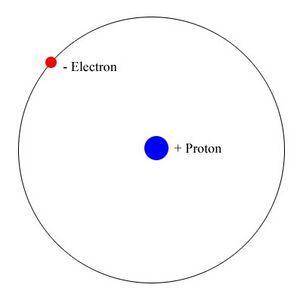Homeworks 1: Difference between revisions
mNo edit summary |
(Added Infobox) |
||
| Line 1: | Line 1: | ||
<!-- INFOBOX --> | |||
{| class="wikitable" align="right" border="1" cellpadding="5" cellspacing="0" | |||
|+align="bottom" style="color:#AAAAAA;"|''Homeworks 1'' | |||
|<center><big>'''Homeworks 1'''</big></center> | |||
[[Image:Example.jpg|thumb|center]] | |||
<!-- EMBEDDED TABLE --> | |||
{| align="center" border="0" cellpadding="5" cellspacing="0" width="240" | |||
! colspan="2" style="background:#ccffff;"| About this Assignment | |||
|- valign="top" | |||
| '''Topics''' | |||
| | |||
|- valign="top" | |||
| '''Chapters''' | |||
| 1 - 3 | |||
|- valign="top" | |||
| '''Lectures''' | |||
| 1 - 5 | |||
|} | |||
<!-- END OF EMBEDDED TABLE --> | |||
|} | |||
<!-- END OF INFOBOX --> | |||
'''Homeworks 1''' is the attempted solution to our second task<ref>Our first task was to register our PRS, visit the course web-page on Blackboard, look at the textbook, and write an equation for our [[Exercise PhysicsWiki|wiki]]</ref> in the course [[AST4210_5211: Introduction to Astrophysics - Fall 2009|Introduction to Astrophysics]]. This assignment is due on ''Wednesday 09/09/09'' and was assigned on 09/01/09. | '''Homeworks 1''' is the attempted solution to our second task<ref>Our first task was to register our PRS, visit the course web-page on Blackboard, look at the textbook, and write an equation for our [[Exercise PhysicsWiki|wiki]]</ref> in the course [[AST4210_5211: Introduction to Astrophysics - Fall 2009|Introduction to Astrophysics]]. This assignment is due on ''Wednesday 09/09/09'' and was assigned on 09/01/09. | ||
Revision as of 20:03, 6 September 2009
| ||||||||
Homeworks 1 is the attempted solution to our second task[1] in the course Introduction to Astrophysics. This assignment is due on Wednesday 09/09/09 and was assigned on 09/01/09.
Problem 1
List in order of increasing size and give the approximate size of the following objects: An atom, a biological cell, a cluster of galaxies, the Earth, a galaxy, the Local Group of galaxies, a neutron, a neutron star, a person, the Solar System, our sun. Note: you may have to look in other books besides your textbook to get all this information.
Problem 2
The nearest star outside the solar system is about 4 light years away.
- How far away is the star in kilometers?
- Suppose you travel to the nearest star in a rocket ship moving at 100 km per hour (100 km/hr is
about 62 mi/hr, a typical automobile speed on a Florida highway). How many years will it take you to get to the star?
- Suppose you travel to the star at 10 km per second (the speed of a rocket in orbit around the Earth). How many years will it take you to get to the star?
Problem 3
Use the size of the Astronomical Unit in kilometers and the length of the year in seconds to calculate how fast the Earth moves in its orbit in kilometers/second.
Problem 4
Describe the essential differences between the Ptolemaic, Copernican, and Keplerian descriptions of planetary motion.
Problem 5
Use Newton’s laws to show that the orbits of planets are ellipses.
Notes
References
- B.W. Carroll & D. A. Ostlie (2007). An Introduction to Modern Astrophysics. Addison Wesley. ISBN 0-8053-0402-9
